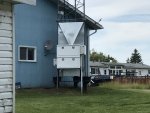kayn1n32008
ØÆSØ Say it, say 'ENCRYPTION'
This site took a direct lightning strike on Monday during a decent storm that rolled through
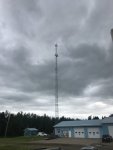
This 4” sq junction box had it’s cover blown off and was found about 30’ away
This is the Weather proof enclosure that the sites power comes into. As you can see the door was blown off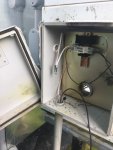
This is the remains of the DIN rail mounted 15A breaker in the enclosure.

This is all that remains of a single 115v/15A DIN rail outlet.
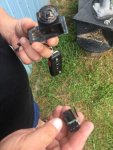
This is all that remains of the DLink surge ‘protected’ power bar plug. You can see the other end of the cable in the background although it’s blurry.
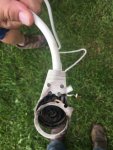
There was $15-$20k worth of damage to the site. All 3 microwave link radios were destroyed, at least 4 of 8 AP(4x AP per band) radios were destroyed along with all the power supplies and lightning arrestors inside the equipment cabinet. My wife watched the strike occur as she was driving into town, and our tenant living in our house damn near had to peel herself off the ceiling in side the house. My house Is about 60m away from the tower. The tower is just shy of 43m tall

This 4” sq junction box had it’s cover blown off and was found about 30’ away

This is the Weather proof enclosure that the sites power comes into. As you can see the door was blown off

This is the remains of the DIN rail mounted 15A breaker in the enclosure.

This is all that remains of a single 115v/15A DIN rail outlet.

This is all that remains of the DLink surge ‘protected’ power bar plug. You can see the other end of the cable in the background although it’s blurry.

There was $15-$20k worth of damage to the site. All 3 microwave link radios were destroyed, at least 4 of 8 AP(4x AP per band) radios were destroyed along with all the power supplies and lightning arrestors inside the equipment cabinet. My wife watched the strike occur as she was driving into town, and our tenant living in our house damn near had to peel herself off the ceiling in side the house. My house Is about 60m away from the tower. The tower is just shy of 43m tall


